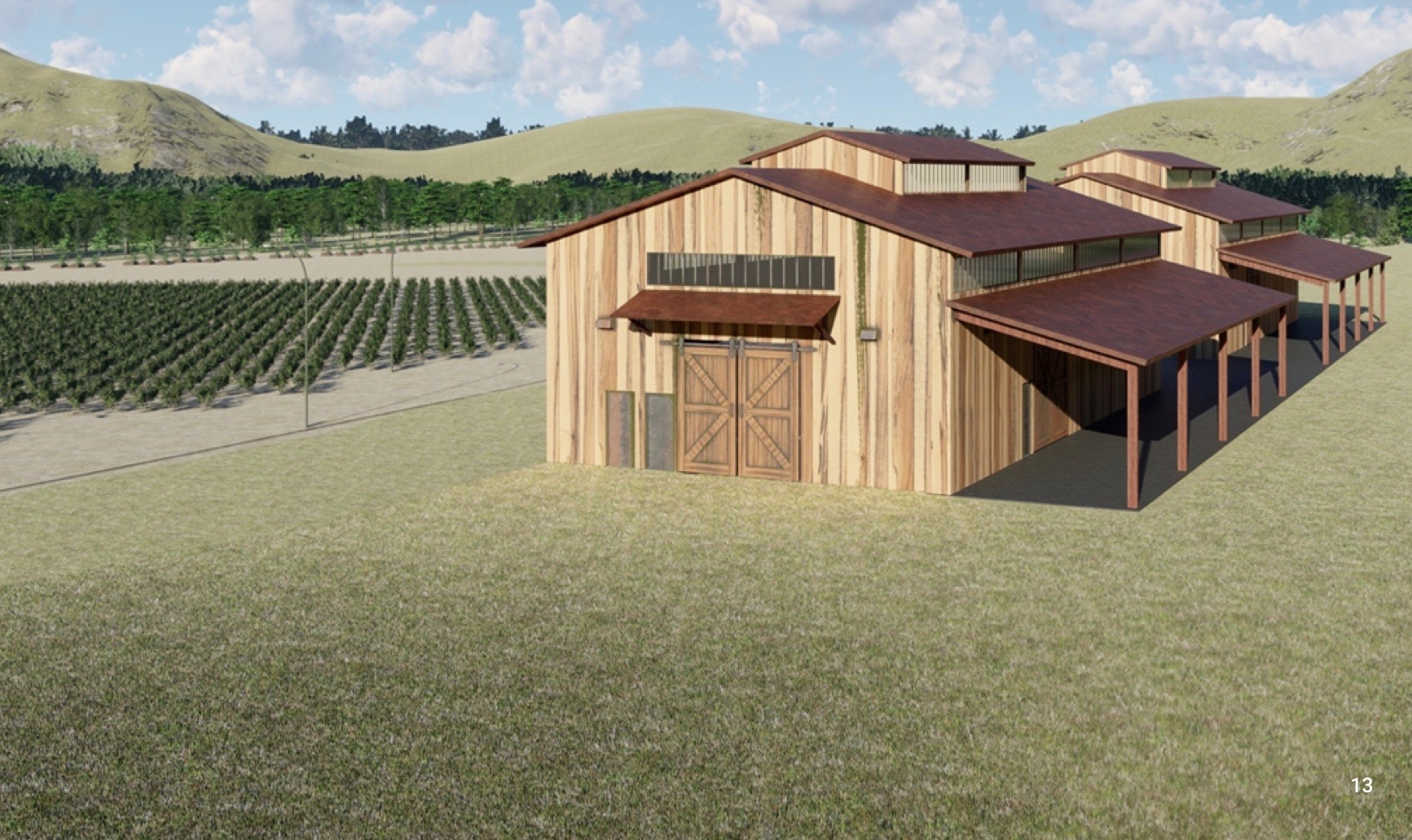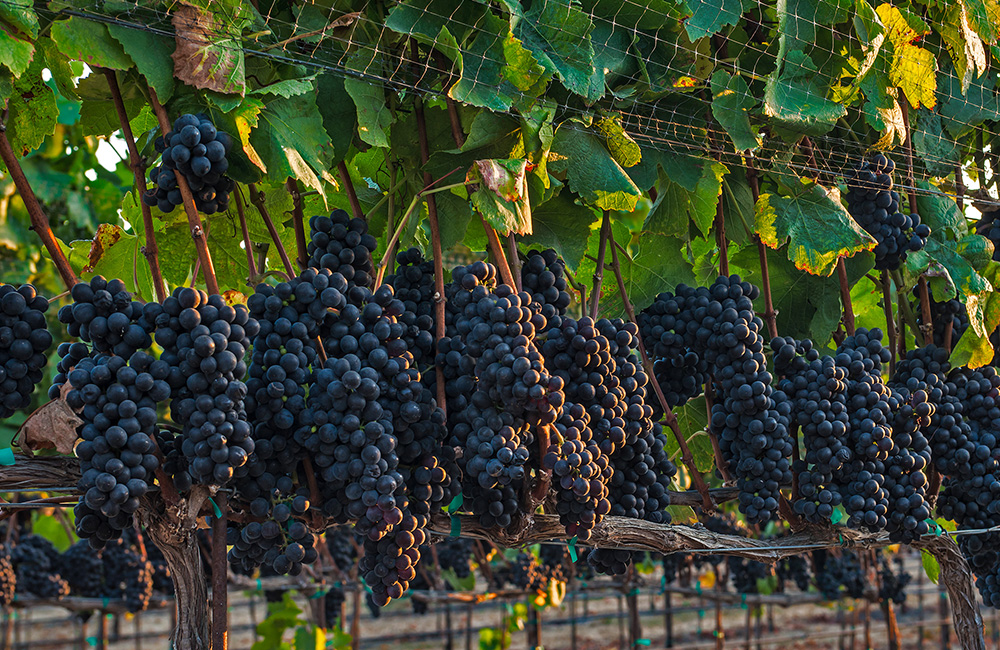Fifty-Acre Cannabis Operation Gets Green Light in Wine Country
Vintners’ Pleas Again Fail to Sway Santa Barbara County Board of Supervisors

The largest cannabis operation to come before the Santa Barbara County Board of Supervisors — 50 acres of cultivation at the gateway to the fabled Sta. Rita Hills, a federally designated wine-grape-growing region — was approved for a zoning permit in a contentious 3-2 vote on Tuesday.
Santa Barbara West Coast Farms LLC, located on 73 acres on Highway 246, a mile west of Buellton, was before the board on appeal. The county Planning Commission turned down the project in December, saying the proposed area for cannabis cultivation and processing covered too much of the property and would generate “skunky” smells. The commission found that the operation would create conflicts with vintners and other “legacy agriculture,” partly because of the potential for “pesticide drift” onto the lucrative cannabis crop.
But Supervisor Steve Lavagnino, who represents the Santa Maria Valley, wasn’t having any of it. He said Tuesday that to deny West Coast Farms would effectively be to ban all outdoor cannabis cultivation in the Santa Rita Hills.
“Everybody says this is the wrong place,” Lavagnino said. “That seems to be the argument every time cannabis comes up. It’s easy to tell people to go somewhere else.”
If the board wasn’t going to approve the West Coast Farms cannabis operation, Lavagnino said, “I guess we go out into the Los Padres National Forest to do it illegally because there’s nowhere else for them to go.”
It was the second cannabis project to be approved by the board on Highway 246 in just over a month. On March 17, the board voted 4-0 to allow 22 acres of outdoor cannabis cultivation, including five acres in hoop houses, on 62 acres at Busy Bee Organics, just half a mile east of West Coast Farms. In all, county planners said, 625 acres of cannabis cultivation are proposed in the Santa Rita Hills, an area seven miles long and three miles wide between the Santa Rosa and La Purisima hills.
Lavagnino said he viewed cannabis as the county’s “one reliable source of income.” The county estimates it will collect $9 million in cannabis taxes this fiscal year, a third of which will be spent on planning and enforcement. The county’s annual budget is about $1 billion.
“We’re in a fiscal crisis,” Lavagnino said. “I don’t know where everybody thinks we’re going to pay for all these things we need to do in this county.”
But the Busy Bee vote and a barrage of opposition to cannabis from residents living with the pungent smell of cannabis along Carpinteria’s urban boundary, where the plants are grown in greenhouses with open vents, prompted the county Planning Commission on March 25 to recommend tighter zoning restrictions for the industry.
Cannabis operations, the commission said, should be required to be compatible with surrounding neighborhoods and to prevent odors that are detrimental to people’s health and comfort. The board has yet to schedule a hearing on the recommendation.
Supervisor Joan Hartmann, who represents the Santa Ynez Valley and part of the Lompoc Valley, rose to the defense of local vintners on Tuesday with a “no” vote on the West Coast Farms plan. For starters, she said, more study is needed to determine whether the volatile oil compounds called terpenes that waft onto grapes from cannabis could “taint” the region’s boutique wines. She said that the Sta. Rita Hills had been designated as an American Viticultural Area because its cold nights and warm days were ideal for growing wine grapes. A bottle of pinot noir from these vineyards can command $95, Hartmann said.
“This region has been working for 20 years to create a reputation there,” she said. “It takes seven years to get a functioning vineyard. Cannabis can grow anywhere. Santa Rosa Hills is one of a kind.
“We have a thriving wine industry, and I think we’re putting it at risk.”
‘Skunks and Dumps’
A number of vintners were joined at Tuesday’s “virtual” hearing by several dozen supporters from around the county, including Carpinteria, Solvang, and Tepusquet Canyon, who called in or e-mailed letters to be read aloud.
“I get tired of people telling me what it’s like to live here,” said Jackie Thiele, a resident of the Santa Rita Hills, noting that some supervisors have claimed they can’t smell anything when they drive through. “I live here. We are slowly losing our quality of life. What are we going to look like down the road? Don’t ruin our community by allowing these massive grows.”
If cannabis odor-control systems, which were originally designed for landfills, are not working in Carpinteria inside greenhouses, these critics said, how well will they work in open fields?
“Wineries cannot sell wine when the air smells like skunks and dumps,” said Blair Pence, the owner of Pence Vineyards & Winery, whose tasting room is across Highway 246 from West Coast Farms. In a letter to the board, Pence, who is the cofounder of Santa Barbara Coalition for Responsible Cannabis, a countywide citizens’ group, said that three-quarters of his business was from direct sales to consumers. They are drawn to the region because they can enjoy wine tasting out-of-doors and stroll around the vineyards, Pence said.
When an illegal cannabis operation popped up a mile away, Pence said, the smell of cannabis drove him and his wife out of their home and into a rental. After a year, he said, the illegal “grow” was finally shut down.
Pence said he had county approval to build a winery on his 38-acre property but has put it on hold. He’s heard the jokes about “CannaBarbara” and believes competitors might try to take away his customers in a business where public perception is everything.
“It could be really bad,” Pence said after Tuesday’s vote. “We’re very afraid as to what this will do.… Cannabis wants to ride our coattails.”
No Monopoly
West Coast Farms is owned by Scott Rudolph and Kavaughn Bagby, San Diego real estate developers who are reportedly farming cannabis elsewhere. Unlike the majority of cannabis operators in this county, including the owners of Busy Bee, they were not claiming “legal, nonconforming” status — that is, they were not farming cannabis on their land without a permit, based on prior cultivation for medicinal use. And unlike Busy Bee, they were not proposing to grow cannabis in hoop houses, which vintners and residents view as a blight on the landscape.
In a letter to the board, Larry Conlan, an attorney for West Coast Farms, said that the company had done lab studies on Pence’s wine and found “zero effect” from terpene drift. (Pence says the study was not conducted during the critical period when an illegal cannabis grow was operating nearby.)
It is ironic, Conlan said, to criticize cannabis farmers for how they may respond to pesticide drift from neighboring farms and vineyards when cannabis itself is pesticide-free. Pesticide drift is not allowed under California law, he said.
In addition to 46 acres of cannabis cultivation, West Coast Farms is now approved for four acres for a nursery and two new processing buildings, each 3,000 square feet. The company will flash-freeze marijuana for cannabis oil, bag it, and ship it during two monthlong harvests per year, Conlan said, and there will be no drying of cannabis, which typically creates the “skunky” smell.
“There will be no opportunity for detectable, traceable odor,” Conlan told the board.

But several Carpinterians cautioned that the odor-control system that has been installed on greenhouses and will be installed around West Coast Farms doesn’t work very well. “Will we be wearing masks forever?” one speaker asked.
“Carpinteria still smells?” Lavagnino responded. “We just had an election in Carpinteria.
“People spent hundreds of thousands of dollars,” he said, to decide “whether cannabis was a hindrance or a help.
“As far as I can see, Supervisor [Das] Williams is still sitting there,” Lavagnino said. “The people of Carpinteria have spoken. The wine industry doesn’t have a monopoly on land-use decisions just because they’re there.”
In fact, Williams won reelection in November with 52 percent of the overall vote and 57 percent in Carpinteria. His challenger, Laura Capps, took him to task for accepting $60,000 in donations from the cannabis industry during the 2016 campaign.
But on Tuesday, Williams and Board Chair Gregg Hart said they were only “reluctantly” voting for West Coast Farms. Hart, who represents the Goleta Valley and western Santa Barbara, said he hoped the board would soon take up the question of stricter zoning regulations for cannabis.
Williams made a motion to reduce the cannabis operation at West Coast Farms to 37 acres, but the motion died for lack of support.
“I continue to have concerns about projects of this size on lots of this size,” Williams said, in voting to approve the project.
Board Vice-Chair Peter Adam, an industrial-scale vegetable grower who represents Orcutt and the City of Lompoc, voted “no.” The county may need revenue, he said, “but this is a bridge too far for me, where we’re going to sacrifice existing businesses that have millions of dollars invested and have somebody move in across the street that’s going to imperil their operation.”
Adam, a staunch conservative, expressed surprise to find himself in alignment with citizens groups who want the board to revisit the county’s one-size-fits-all environmental report for cannabis projects. Terpene taint has not been adequately reviewed, Adam said, and neither has pesticide drift from farming operations next to cannabis.
“There are effects that are worse in retrospect than we thought they were,” he said.
“West Coast has utterly destroyed traditional tribalism,” Adam said. “I’m sitting here with the strangest of bedfellows. Maybe hell has frozen over.”
Melinda Burns is a freelance journalist in Santa Barbara.
At the Santa Barbara Independent, our staff continues to cover every aspect of the COVID-19 pandemic. Support the important work we do by making a




You must be logged in to post a comment.